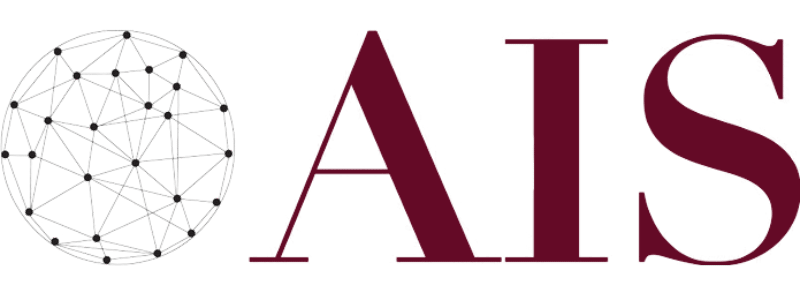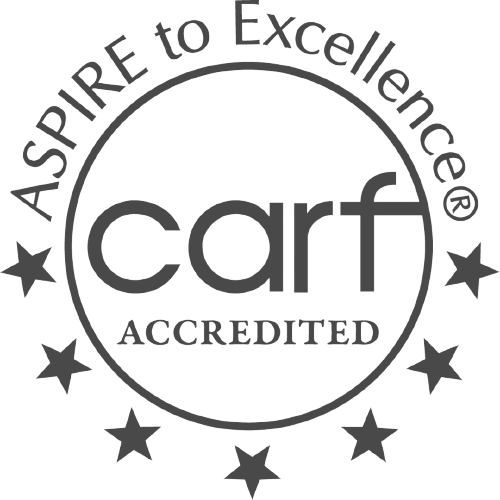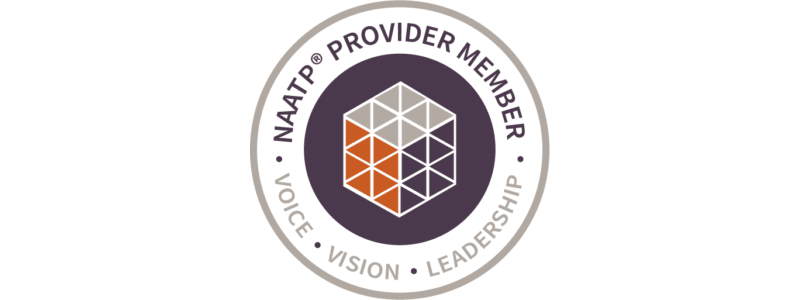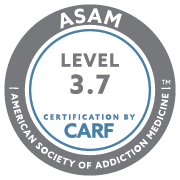What Are Stimulant Drugs?
Stimulant abuse is a serious issue that can have severe consequences for both physical and mental health. Some of the main risk factors for stimulant abuse include pre-existing mental health disorders, stressful life events, and environmental factors like peer pressure or easy access to stimulants.
Stimulants come in the form of:
- Pills, powder
- Rocks
- Injectable liquids
Stimulants work by increasing levels of the neurotransmitters dopamine and norepinephrine in the brain. This increase in neurotransmitter activity leads to the stimulant effects that people experience, such as increased alertness, energy, and pleasure. Stimulant drugs are substances that increase activity or alertness. They include illegal drugs, such as cocaine and methamphetamines, as well as some legal prescription medications, such as Adderall and Ritalin.
While stimulants are commonly associated with college students and young adults, stimulant abuse can affect anyone at any age. If you or a loved one is struggling with stimulant addiction, there are many effective treatment options available to help you overcome your stimulant abuse and begin living a healthier life free from substance abuse.
What’s the Difference Between Illegal Stimulants and Prescription Stimulants?
The difference between illegal stimulants and prescription stimulants is that illegal stimulants are not regulated by the government and can be abused more easily. Prescription stimulants are regulated and only available with a doctor’s prescription.
Common street names for stimulants include:
- Bennies
- Black Beauties
- Cat
- Coke
- Crank
- Crystal
- Flake
- Ice
- Pellets
- R-Ball
- Skippy
- Snow
- Speed
- Uppers
- Vitamin R
What Are the Effects of Stimulant Drugs?
The effects of stimulant drugs vary depending on the specific drug, but all stimulants increase alertness, energy, and feelings of well-being. Stimulants can also cause side effects like anxiety, agitation, paranoia, and psychosis. Stimulant abuse can also lead to psychotic episodes characterized by delusions and hallucinations. In some cases, stimulant abuse can result in death.
How Does Stimulant Abuse Impact the Brain?
The brain is impacted by stimulant abuse in several ways. Stimulants increase the levels of dopamine in the brain, which leads to the feeling of pleasure or euphoria. Over time, the brain becomes accustomed to the increased level of dopamine and may begin to require more of the drug to achieve the same effect. This can lead to stimulant addiction.
How Does Mental Health Relate to Stimulant Abuse
Mental health conditions are often comorbid with stimulant abuse. This means that stimulant abuse can worsen an existing mental health condition and vice versa. Mental health conditions that are commonly comorbid with stimulant abuse include anxiety disorders, depression, and bipolar disorder. Stimulant abuse can also trigger the onset of psychotic episodes characterized by delusions and hallucinations.
Common Types of Stimulant Drugs
Some common types of stimulants include:
- Amphetamines – A white, odorless powder that can be swallowed, inhaled, or injected. Adderall is a pill that is taken orally
- Cocaine – A a white powder that is typically snorted but can also be injected or smoked
- Crack cocaine – A type of cocaine that is made into small “rocks” that can be smoked
- Ecstasy (MDMA) – A stimulant drug that is often taken in pill form. It can also be snorted or injected
- Methamphetamine – A stimulant drug that is similar to amphetamine. It can be taken orally, by injection, or inhaled as “crystal meth”
What are the Signs and Symptoms of Stimulant Addiction?
People who are addicted to stimulants may exhibit a variety of symptoms, including increased need for the stimulant, withdrawal symptoms when they are unable to get the stimulant, constant cravings for the stimulant, and trouble controlling their stimulant use. Other signs of stimulant addiction may include changes in appetite and sleep patterns, mood swings, and inability to focus on tasks or activities.
The signs and symptoms of stimulant abuse can vary depending on the substance being abused, as well as the frequency and quantity of use. However, there are some common signs and symptoms that may indicate stimulant abuse, which include:
- Increased energy or alertness
- Heightened senses
- Euphoria
- Decreased appetite
- Weight loss
- Increased heart rate and blood pressure
- Rapid breathing
- Dilated pupils
- Clenched teeth
- Sweating
- Tremors or twitching
If you or someone you know is displaying any of these signs or symptoms, it may be indicative of stimulant abuse and it is important to seek help as soon as possible.
Withdrawal Symptoms of Stimulant Abuse
The withdrawal timeline of stimulant abuse will vary depending on the stimulant in question, as different stimulants have different half-lives. Some of the more common withdrawal symptoms include:
- Fatigue
- Depression and anxiety
- Restlessness
- Difficulty sleeping or concentrating
If you or someone you know is experiencing these symptoms, it may be indicative of stimulant abuse and it is important to seek help as soon as possible. Getting treatment for stimulant addiction can help address both the physical and psychological aspects of stimulant abuse, allowing individuals to regain control over their lives and live without the harmful effects of stimulant addiction.
How Do People Develop Stimulant Drug Addiction?

People develop stimulant abuse for some reasons. Some people abuse stimulants in an attempt to improve their performance at work or school, while others abuse stimulants to lose weight or to stay awake for long periods of time. Some people begin abusing stimulants because they are curious about the effects, while others start using stimulants because of peer pressure.
No matter why someone begins abusing stimulants, continued use of these drugs can lead to addiction. Stimulant addiction is a chronic and relapsing disease characterized by compulsive stimulant use despite negative consequences. People with stimulant addiction often continue using stimulants even when they are aware of the harmful consequences of their drug use.
Who is Most at Risk of Stimulant Abuse?
Those most at risk of stimulant abuse are people who have easy access to stimulants, people who abuse other substances, and people with mental health disorders. People who are going through a difficult period in their life or who have unresolved trauma are also at a higher risk of stimulant abuse.
Is Stimulant Abuse on the Rise?
Stimulant abuse is down 10% since 2015, with millions of Americans using stimulants for recreational purposes. 19% of stimulant abusers report using the drug to help with academic studies. 50.7% of abusers report using stimulants to stay alert and/or concentrate. 9.8% of stimulant abusers report using the drug to get high while 4.1% use it intending to lose weight. Other reported reasons for use include experimentation (5.8%) or to increase/decrease the effects of another drug (1.1%).
There are several contributing factors to this increase in stimulant use, including the widespread availability of these drugs and the growing social acceptability of stimulant abuse. Long-term effects of stimulant abuse include damage to the liver, kidneys, and blood vessels.
Signs of Stimulant Overdose
Signs of stimulant overdose may vary depending on the stimulant used, but some common signs include:
- Severe agitation and hyperactivity
- Sudden changes in heart rate or blood pressure
- Vision disturbances
- Paranoid delusions or hallucinations
- Seizures
Treatment for Stimulant Abuse
There are many treatment options available for stimulant abuse. Treatment typically begins with a detoxification period in which the person stops using the drug and allows their body to physically adjust to the lack of the drug. Some common treatments include behavioral therapies such as cognitive-behavioral therapy (CBT), contingency management (CM), or motivational enhancement therapy (MET). A stimulant addiction may also be treated with medications like bupropion or naltrexone.
Detoxification can be followed by inpatient or outpatient treatment, which may include therapy, counseling, and support groups. Medications may also help those in recovery manage their stimulant abuse and avoid relapse. Overall, the most successful treatment programs for stimulant addiction are those that are tailored to each person’s needs and circumstances.
Inpatient treatment for stimulant addiction typically lasts 28 days, though some programs may be shorter or longer. During inpatient treatment, people stay at a residential facility where they receive around-the-clock care and supervision. This type of treatment can be beneficial for those with severe stimulant addiction who need more structure and support during recovery.
Outpatient treatment for stimulant addiction typically consists of weekly meetings with a therapist or counselor. People in outpatient treatment usually live at home and continue to go to school or work while attending treatment. Outpatient treatment can be helpful for those with less severe stimulant addiction who have a strong support system at home.
Therapy is an important part of stimulant addiction treatment. Therapy can help people uncover the root cause of their stimulant abuse and learn healthy coping skills to deal with triggers and stress. Some common types of therapy used in stimulant addiction treatment include individual counseling, group therapy, family therapy, and behavioral therapy.
Dual Diagnosis treatment is a form of treatment that addresses stimulant addiction alongside any co-occurring mental health disorders. Stimulant addiction can often be caused or exacerbated by a mental health disorder, such as depression, anxiety, bipolar disorder, or ADHD. By addressing both stimulant addiction and the underlying mental health disorder at the same time, people can effectively manage their stimulant abuse and stay on track with recovery.
Aftercare for stimulant abuse and addiction is an essential component of recovery. This phase of treatment typically involves ongoing individual counseling, group therapy, family therapy, and behavioral therapy. Ongoing support from friends and family can also be a crucial part of stimulant addiction recovery.
New Directions for Women Supports Women Who are Suffering From Stimulant Abuse
If you or someone you know is struggling with stimulant abuse, it is important to seek professional help as soon as possible. Treatment options may include detoxification, inpatient or outpatient treatment programs, therapy and counseling, support groups, and/or medication management.
With the right treatment plan, you can overcome stimulant addiction and manage any underlying mental health disorders that may be contributing to your stimulant abuse. To learn more about stimulant addiction treatment options, reach out to New Directions for Women today.










